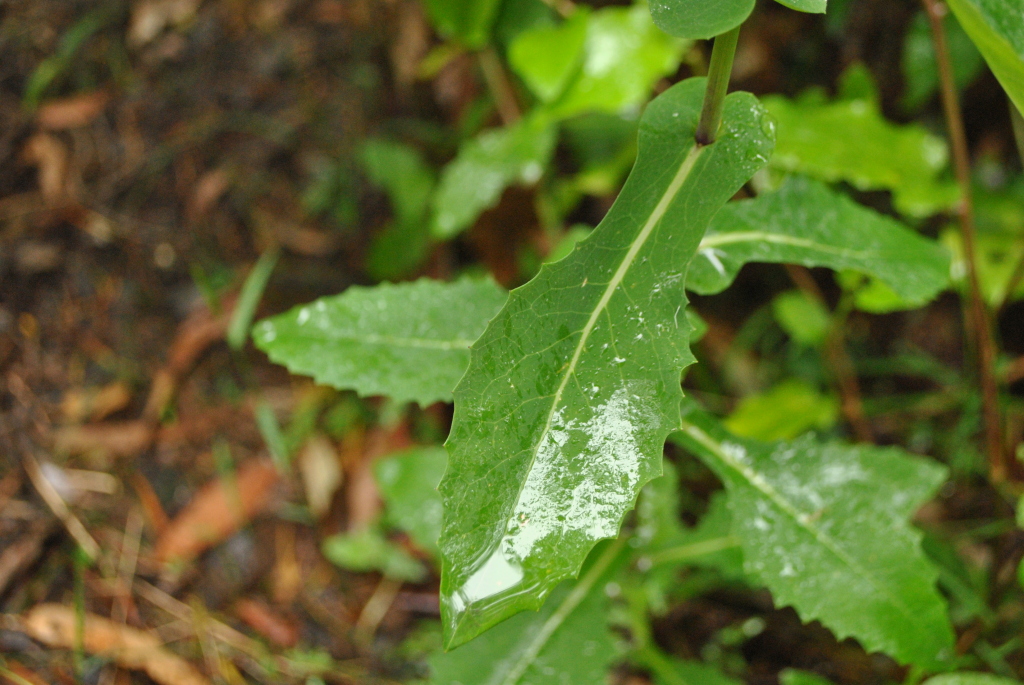Lordhowea velleioides
(A.Cunn. ex DC.) Schmidt-Leb.Slender, erect, simple or few-branched, glabrous annual or short-lived perennial, 30–100(–160) cm high. Leaves sessile, the lower auriculate, oblanceolate or obovate, coarsely toothed to entire, becoming ovate to lanceolate, entire, with broadly stem-clasping (often overlapping) bases above, 3–14 cm long, 8–40 mm wide; upper surface dull green, somewhat waxy; lower surface grey-green, waxy. Inflorescence of c. 10–30 capitula; capitula radiate; involucre cup-shaped or campanulate, 6–10 mm long; bracts 12–16; bracteoles not immediately subtending involucre. Ray florets 6–9, yellow, ligules 8–15 mm long; disc florets c. 30–50, yellow. Cypselas cylindric, 2–3 mm long, with 8–10 prominent, alternately glabrous and hairy channels, brown to blackish; pappus of fine white barbellate hairs 3–4 mm long, deciduous Flowers Oct.–Mar.
VVP, GipP, OtP, WaP, CVU, GGr, NIS, EGL, EGU, WPro, HSF, HNF, OtR, Strz, HFE, VAlp. Also NSW, Tas. Locally common in wet forests east from the Grampians, usually appearing in canopy gaps or track margins following disturbance.
Specimens from the Grampians were previously included in L velleioides (as Senecio velleioides) but are now recognised as L. pilosicrista, usually a species of drier, mallee areas.
 Spinning
Spinning